26th August, 2025

Jun 05, 2023
Langtang Valley Trek in October
- Why Langtang Trek in October
- Highlights of Langtang Valley Trek in October
- Langtang Trek Weather and Temperature in October
- Prepare for Langtang Valley Trek in October
- Why October is the Best Time for Langtang Valley Trek
- Best Trekking Agency for Langtang Valley Trek is Sherpa Expedition
- I am a Vegetarian, Can I Get Vegetarian Food on Langtang Trek?
- Preparation for Langtang Valley Trek
- Guide and Porter: Food and Accommodation
- Permit and Transportation
- Can I Do the Langtang Valley Trek Solo?
- Langtang Valley Trek Cost for October
- How Difficult is the Langtang Valley Trek in October?
- Can We Do the Langtang Valley Trek in 7 Days?
- Final Say
- Langtang Region Packages
Embarking on the Langtang Valley Trek in October is an experience that combines the best of Nepal's natural beauty with favorable trekking conditions. October falls within the post-monsoon season, making it one of the most popular times for trekking in the Langtang region. The weather during this month is generally stable, with clear skies and moderate temperatures, providing trekkers with stunning views of the snow-capped peaks and lush landscapes.
The trek begins from Syabrubesi, a quaint village that serves as the gateway to the Langtang Valley. As you ascend through dense forests of rhododendron and bamboo, the trail offers glimpses of diverse wildlife, including the elusive red panda. The vibrant autumn colors add a magical touch to the scenery, making every step a visual delight.
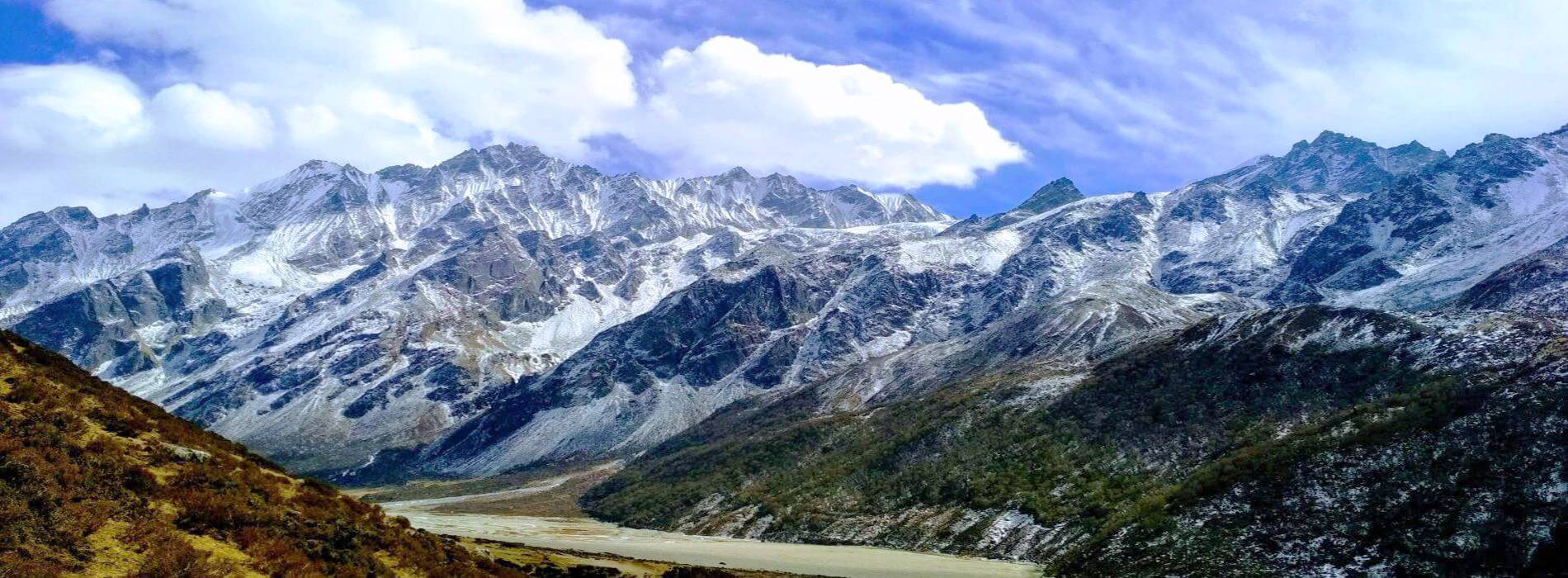
LANGTANG VALLEY TREK
A visit to Langtang National Park, Nepal’s first Himalayan national park- formed in 1976, is a wonderland of natural beauty and rich Tamang culture and only a hop-step and jump from Kathmandu!The Lang...
One of the highlights of the Langtang Valley Trek in October is the panoramic view from Kyanjin Ri or Tserko Ri. These vantage points offer breathtaking vistas of Langtang Lirung, Dorje Lakpa, and other majestic peaks. The crisp, clear air enhances visibility, allowing trekkers to fully appreciate the grandeur of the Himalayas.
Cultural experiences are another enriching aspect of this trek. The trail passes through several Tamang villages, where you can immerse yourself in the local culture and traditions. October is also a time for various local festivals, providing a unique opportunity to witness traditional celebrations and rituals.
Accommodation in the teahouses along the route is comfortable, and the hospitality of the local people adds warmth to the journey. However, due to the popularity of this season, it's advisable to book your accommodations in advance.
In summary, trekking the Langtang Valley in October offers a perfect blend of natural beauty, cultural richness, and favorable weather conditions. Whether you're a seasoned trekker or a beginner, this trek promises an unforgettable adventure in one of Nepal's most picturesque regions.
Why Langtang Trek in October
The Langtang Trek in October is a dream come true for many trekking enthusiasts. October is considered one of the best months for trekking in Nepal due to its favorable weather conditions and stunning natural beauty. The monsoon rains have subsided, leaving behind lush green landscapes and clear skies. This makes for breathtaking views of the Langtang mountain range, including peaks like Langtang Lirung and Ganesh Himal. The trails are also less muddy and more stable, making the trek safer and more enjoyable. Additionally, October is a festive month in Nepal, with major festivals like Dashain and Tihar taking place. This offers trekkers a unique opportunity to experience the rich cultural heritage of the region. The local teahouses and lodges are well-prepared to welcome trekkers, providing comfortable accommodations and delicious local cuisine. Overall, the combination of perfect weather, stunning scenery, and cultural experiences makes October an ideal time for the Langtang Trek.
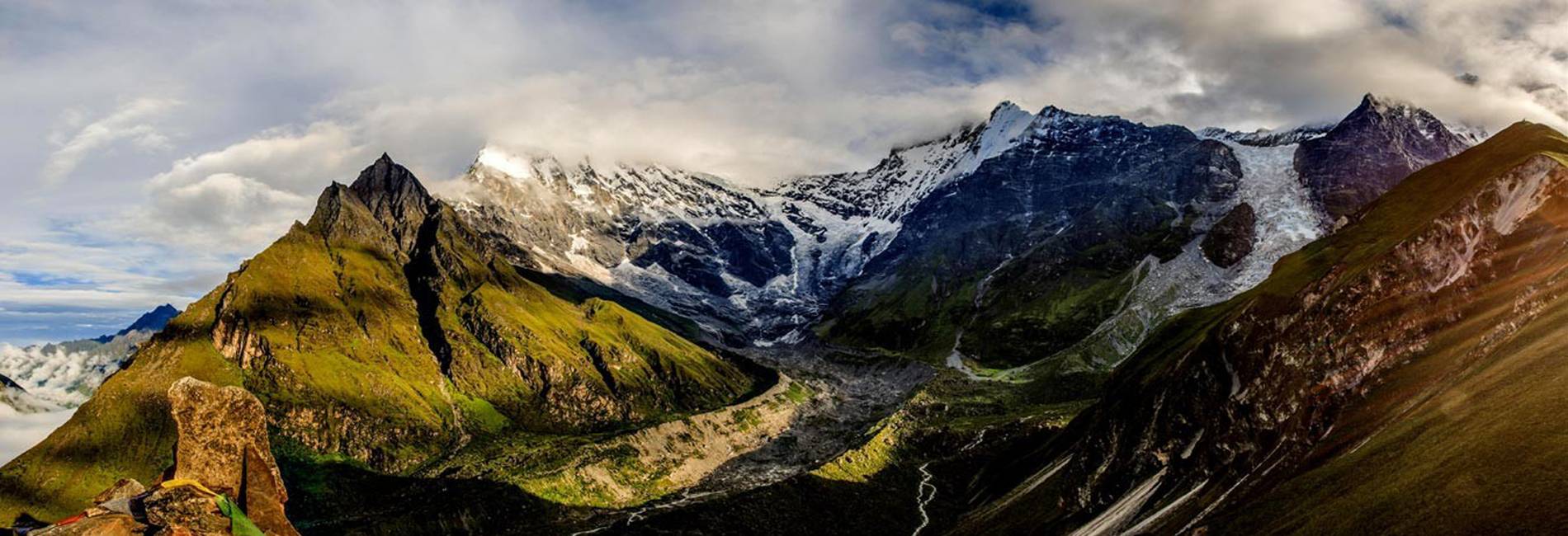
TAMANG HERITAGE TREK
LET THIS BE YOUR AWAKENING AND INTRODUCTION TO TIBETAN BUDDHISM.This is a spiritual journey into the heart of the Tibetan Buddhist region in the Langtang Valley on the Tibetan border. This maybe your...
Highlights of Langtang Valley Trek in October
The Langtang Valley Trek in October offers a unique set of highlights that make it a memorable experience. October marks the end of the monsoon season in Nepal, which means the trails are lush and green, adorned with blooming wildflowers. The waterfalls along the trek are at their most spectacular, thanks to the recent rains. The weather is generally mild, with fewer crowds compared to the peak trekking months of October and November. This allows for a more serene and peaceful trekking experience. The local wildlife, including the elusive red panda, is more active during this time, offering trekkers a better chance of spotting these rare creatures. The local communities are also more relaxed and welcoming, as they prepare for the upcoming festive season. Overall, the Langtang Valley Trek in September provides a perfect blend of natural beauty, tranquility, and cultural richness.
Langtang Trek Weather and Temperature in October
The weather and temperature in October are ideal for trekking in the Langtang Valley. During this month, the skies are usually clear, offering unobstructed views of the majestic Himalayan peaks. Daytime temperatures range from 10°C to 15°C (50°F to 59°F), making it comfortable for trekking. Nights can be cooler, with temperatures dropping to around 0°C to 5°C (32°F to 41°F), so it's essential to pack warm clothing. The low humidity levels and minimal rainfall make the trails more stable and less slippery, reducing the risk of accidents. The pleasant weather conditions also mean that trekkers can enjoy longer daylight hours, allowing for more time to explore and take in the stunning scenery. Overall, the weather and temperature in October create perfect trekking conditions in the Langtang Valley.
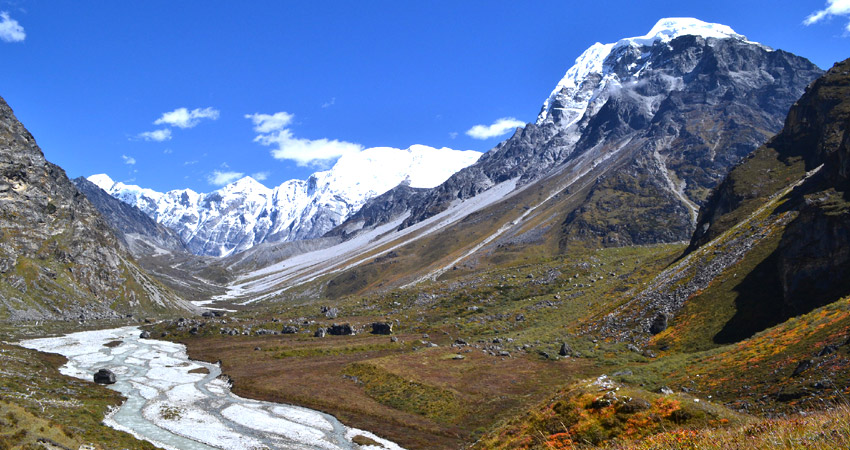
LANGTANG GOSAINKUNDA LAKE TREK
The Langtang Gosainkunda Lake (4380m) Trek takes you to alpine regions that will blow your mind! In a short trip from Kathmandu, you will find yourself in a pristine countryside in Nepal’s first...
Prepare for Langtang Valley Trek in October
Preparing for the Langtang Valley Trek in October requires careful planning and packing. Given the varying temperatures, it's essential to pack layers of clothing that can be easily added or removed. A good quality down jacket, thermal wear, and a waterproof outer layer are must-haves. Sturdy trekking boots with good ankle support are crucial for navigating the rocky and uneven terrain. A reliable backpack, trekking poles, and a sleeping bag rated for cold temperatures are also essential. It's advisable to carry a first aid kit, water purification tablets, and high-energy snacks. Since October is a popular trekking month, it's wise to book accommodations and permits in advance. Physical preparation is equally important; regular cardio exercises, strength training, and practice hikes can help build the stamina needed for the trek. Lastly, familiarizing yourself with the local culture and basic Nepali phrases can enhance your trekking experience.
Why October is the Best Time for Langtang Valley Trek
October is widely regarded as the best time for the Langtang Valley Trek for several reasons. Firstly, the weather is near perfect, with clear skies and moderate temperatures that make trekking comfortable and enjoyable. The post-monsoon season leaves the landscape lush and vibrant, offering stunning views of the snow-capped peaks and verdant valleys. The trails are in excellent condition, with minimal mud and debris, making the trek safer. October also coincides with major Nepali festivals like Dashain and Tihar, providing trekkers with a unique cultural experience. The local teahouses and lodges are fully operational, offering comfortable accommodations and delicious local cuisine. Additionally, the biodiversity of the region is at its peak, with a higher chance of spotting wildlife like red pandas and various bird species. Overall, the combination of favorable weather, stunning natural beauty, and rich cultural experiences makes October the best time for the Langtang Valley Trek.
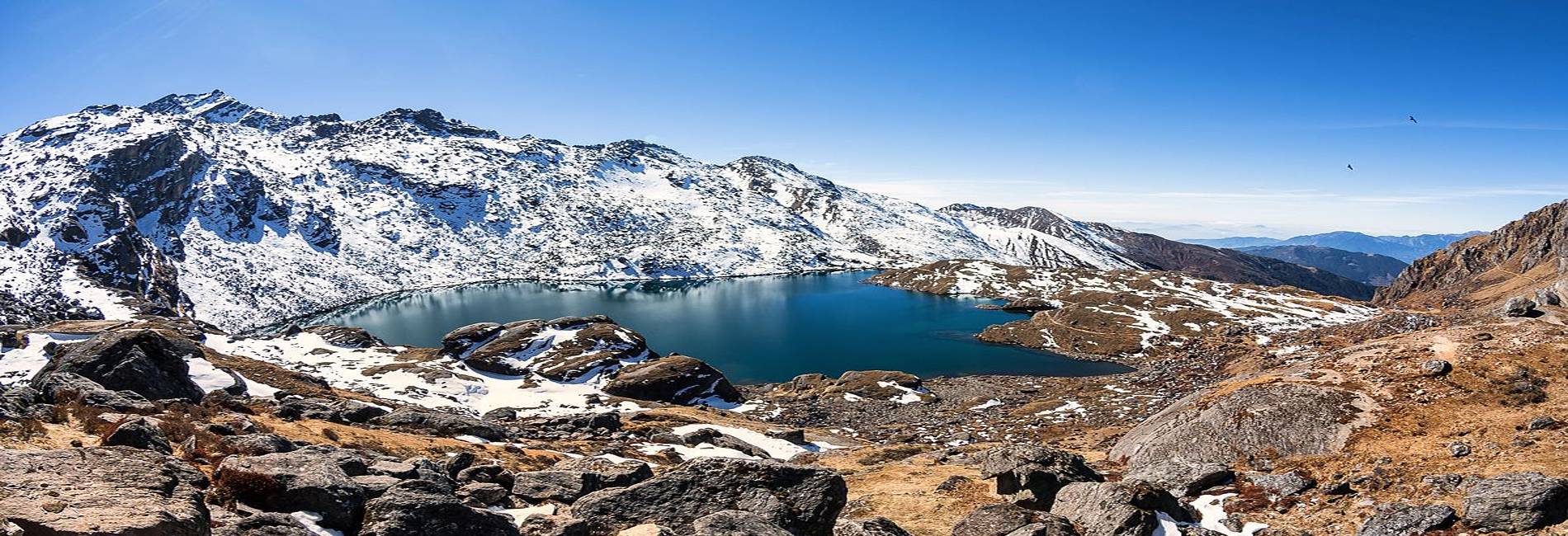
GOSAINKUNDA LAKE TREK
Bath in the pristine clear “holy” water of Gosainkunda Lake, a religious site and abode of Hindu deities Shiva and Gauri. This is a short trek in the much less crowded and quiet Langtang Region o...
Best Trekking Agency for Langtang Valley Trek is Sherpa Expedition
When it comes to choosing a trekking agency for the Langtang Valley Trek, Sherpa Expedition stands out as the best option. With years of experience in organizing treks in the Langtang region, Sherpa Expedition offers unparalleled expertise and local knowledge. Their team of highly trained and experienced guides ensures that trekkers have a safe and enjoyable experience. The agency provides comprehensive packages that include permits, accommodations, meals, and transportation, making the trek hassle-free. Sherpa Expedition is also known for its commitment to sustainable and responsible tourism, ensuring that their treks have minimal impact on the environment and local communities. They offer personalized itineraries that cater to different fitness levels and preferences, ensuring that every trekker has a memorable experience. With excellent customer service and a strong reputation for reliability, Sherpa Expedition is the best choice for anyone planning to trek the Langtang Valley.
I am a Vegetarian, Can I Get Vegetarian Food on Langtang Trek?
Absolutely! As a vegetarian, you can find plenty of vegetarian food options on the Langtang Trek. The tea houses and lodges along the trail are well-versed in catering to various dietary preferences, including vegetarianism. Traditional Nepali dishes like dal bhat (lentil soup with rice), vegetable curries, and momo (dumplings) are commonly available and can be prepared without meat. Additionally, you can find a variety of other vegetarian-friendly options such as fried rice, noodles, and pancakes.
It's always a good idea to communicate your dietary preferences clearly to the lodge owners or cooks to ensure your meals are prepared accordingly. Many trekkers have successfully completed the Langtang Trek while maintaining a vegetarian diet, so you should have no trouble finding suitable food options. Carrying some high-energy snacks like nuts, dried fruits, and energy bars can also be helpful for those times when you need a quick boost of energy between meals.

HELAMBU TREK
Big on beauty for those short on time!The Helambu region is a short trek about 72 km from Kathmandu and offers trekkers so much in such a short space of time. The word Helambu derives from the w...
Preparation for Langtang Valley Trek
Preparing for the Langtang Valley Trek involves several key steps to ensure a safe and enjoyable experience. First and foremost, physical fitness is crucial. The trek involves long hours of walking on varied terrain, so it's important to build your stamina and strength through regular exercise, including cardio and strength training.
Next, gather the necessary gear and clothing. Essential items include a good pair of trekking boots, layered clothing to adapt to changing weather conditions, a warm sleeping bag, and a sturdy backpack. Don't forget essentials like a first aid kit, water purification tablets, and trekking poles.
Acclimatization is another important aspect of preparation. The Langtang Valley Trek reaches altitudes where altitude sickness can be a concern. Plan your itinerary to include rest days to allow your body to adjust to the altitude gradually.
Lastly, familiarize yourself with the route and local culture. Understanding the trail, knowing the locations of tea houses, and being aware of local customs can enhance your trekking experience. Consider hiring a guide or porter for added safety and support, especially if you're new to trekking in Nepal.
Guide and Porter: Food and Accommodation
Hiring a guide and porter for the Langtang Valley Trek can significantly enhance your trekking experience. A guide provides valuable insights into the local culture, geography, and history, making your trek more enriching. They also ensure your safety by navigating the trail, helping with acclimatization, and handling any emergencies that may arise.
Porters, on the other hand, carry your heavy gear, allowing you to trek with just a daypack. This can make the trek more enjoyable and less physically demanding. When hiring a guide or porter, it's important to ensure they are licensed and experienced. Many trekking agencies in Kathmandu offer packages that include guides and porters.
Food and accommodation along the Langtang Valley Trek are typically provided by tea houses. These lodges offer basic but comfortable rooms and a variety of meals. While the food is generally simple, it is nutritious and sufficient to keep you energized for the trek. Common meals include dal bhat, noodles, fried rice, and pancakes. It's advisable to carry some extra snacks for added energy.
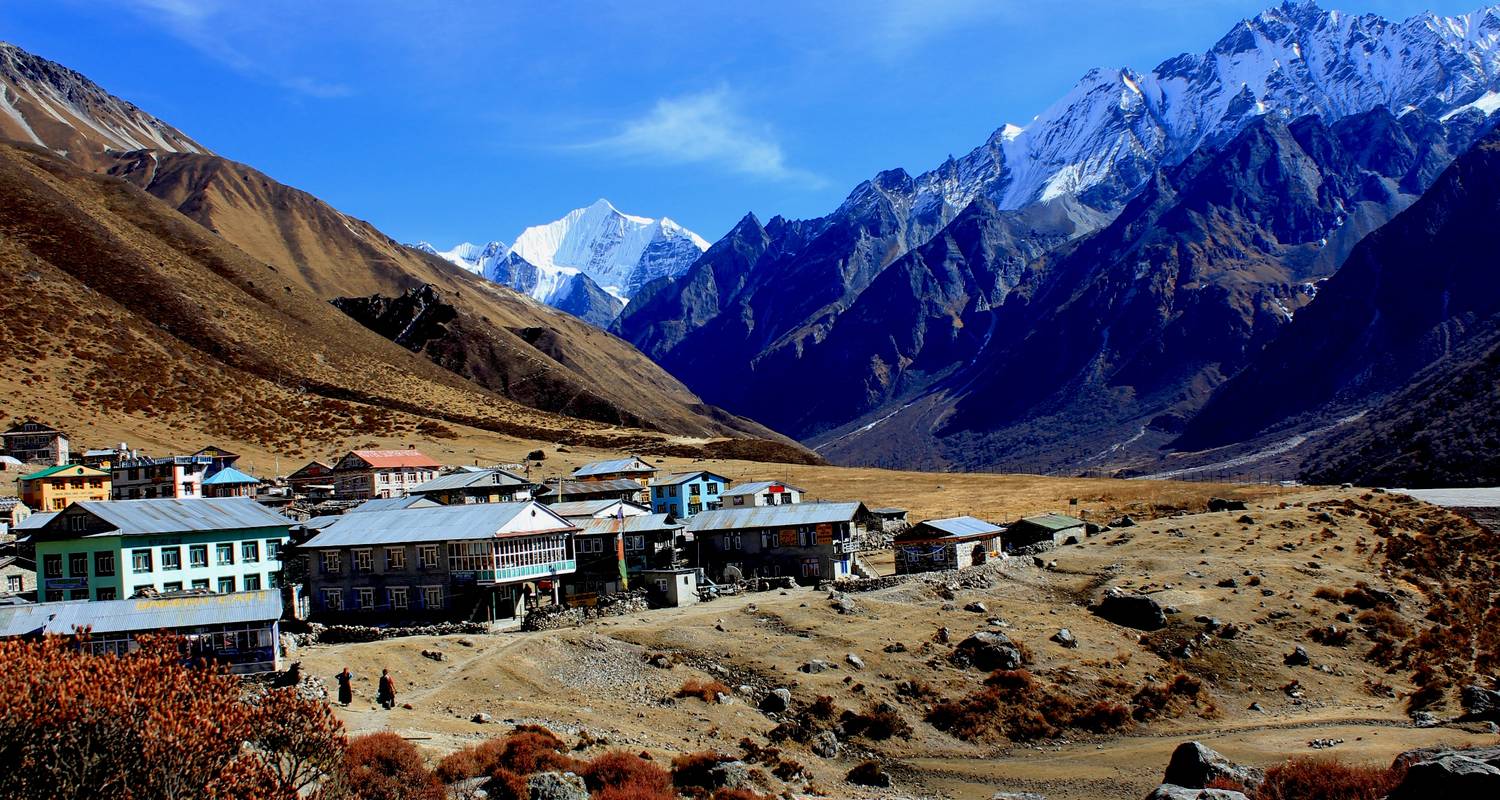
LANGTANG VALLEY TREK 7 DAYS
The Langtang valley, located 61.8 km far from Kathmandu, amazing travelers with its Himalayan streams and magnificent views. Mt. Langtang Lirung (7246 meters) surrounds the colorful rhododendron,...
Permit and Transportation
To trek in the Langtang Valley, you will need two permits: the Langtang National Park Entry Permit and the TIMS (Trekkers' Information Management System) card. These permits can be obtained in Kathmandu from the Nepal Tourism Board office or through a trekking agency. It's important to carry these permits with you at all times during the trek, as there are several checkpoints where they will be checked.
Transportation to the starting point of the Langtang Valley Trek typically involves a bus or jeep ride from Kathmandu to Syabrubesi, which is the main gateway to the Langtang region. The journey takes about 7-9 hours, depending on road conditions. Public buses are the most economical option, but for a more comfortable ride, you can opt for a private jeep.
Can I Do the Langtang Valley Trek Solo?
Yes, it is possible to do the Langtang Valley Trek solo, but there are several factors to consider. Trekking solo offers a sense of freedom and adventure, allowing you to set your own pace and itinerary. However, it also comes with challenges and risks.
One of the main concerns of trekking solo is safety. The Langtang region is remote, and in case of an emergency, help may not be readily available. It's crucial to be well-prepared, carry a detailed map, and have a good understanding of the trail. Informing someone about your trekking plan and expected return date is also advisable.
Another consideration is navigation. While the trail is generally well-marked, there are sections where it can be easy to lose your way. Having a GPS device or a reliable map can be very helpful.
Lastly, trekking solo means carrying all your gear yourself, which can be physically demanding. If you prefer not to carry a heavy load, consider hiring a porter even if you're trekking alone.
Overall, while solo trekking in the Langtang Valley is possible, it requires thorough preparation, a good level of fitness, and a cautious approach to ensure a safe and enjoyable experience.
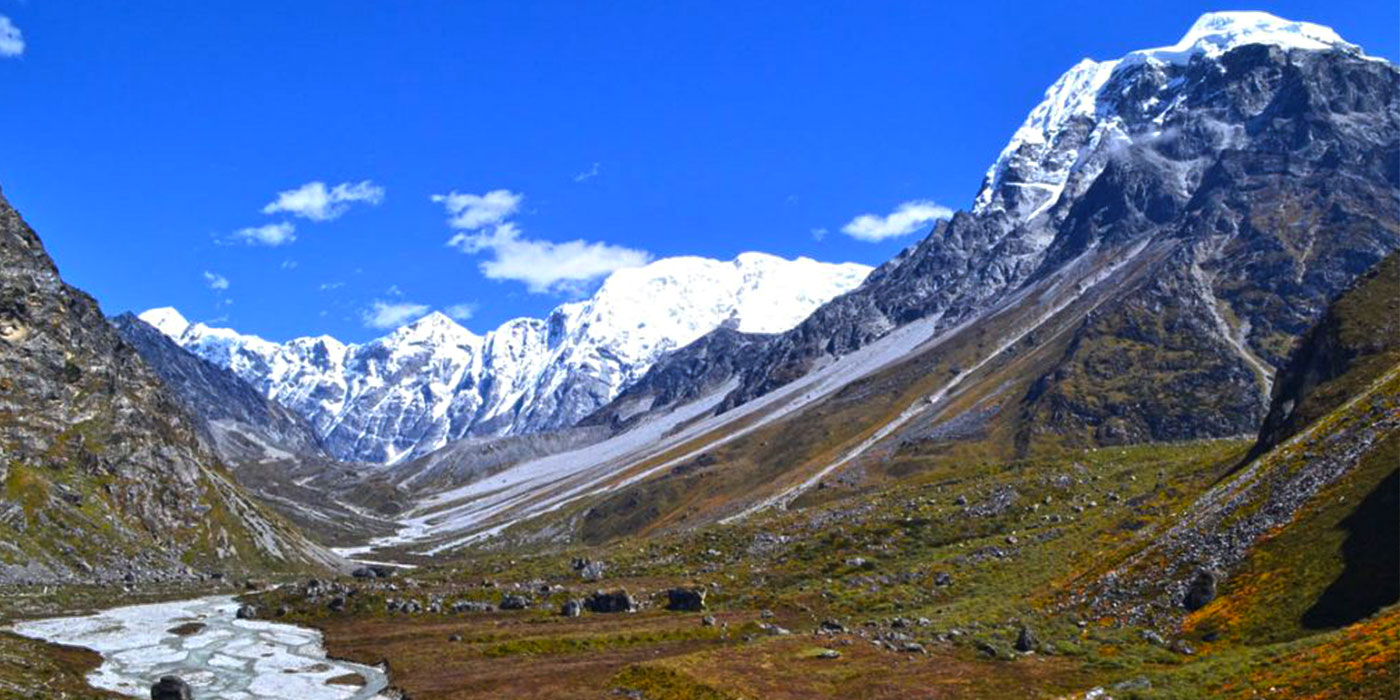
LANGTANG VALLEY TREK 8 DAYS
Langtang National Park is a land of unspoiled beauty, becoming Nepal’s first Himalayan national park in 1976. It is also home to the Tibetan Buddhist Tamang people and is a stone’s throw from Kat...
Langtang Valley Trek Cost for October
The cost of the Langtang Valley Trek in October can vary depending on several factors, including the type of accommodation, food preferences, guide and porter services, and transportation. On average, you can expect to spend between $500 to $1,000 for a 7-10 day trek.
Permits: The Langtang National Park Entry Permit costs around $30, and the TIMS (Trekkers' Information Management System) card costs about $20.
Transportation: A bus ride from Kathmandu to Syabrubesi, the starting point of the trek, costs around $10-$15 for a public bus and $150-$200 for a private jeep.
Accommodation: Tea houses along the trail charge between $5 to $10 per night for a basic room. Some lodges may offer more comfortable accommodations at a higher price.
Food: Meals typically cost between $5 to $10 each. Expect to spend around $20-$30 per day on food.
Guide and Porter: Hiring a guide costs about $25-$30 per day, while a porter costs around $15-$20 per day. Some trekking agencies offer packages that include these services.
Miscellaneous: Additional costs may include tips for guides and porters, snacks, and any gear you may need to rent or purchase.
Overall, budgeting around $700 to $1,000 should cover most expenses for a comfortable trek in October.
How Difficult is the Langtang Valley Trek in October?
The Langtang Valley Trek is considered moderately difficult, and October is one of the best months to undertake this trek due to favorable weather conditions. The trail involves walking 5-7 hours daily on varied terrain, including steep ascents and descents.
Weather: October offers clear skies and mild temperatures, making the trek more enjoyable. Daytime temperatures range from 10°C to 20°C, while nighttime temperatures can drop to freezing at higher altitudes.
Altitude: The highest point of the trek is Kyanjin Gompa at 3,870 meters. Altitude sickness can be a concern, so it's essential to acclimatize properly and take it slow.
Trail Conditions: The trails are generally well-marked and maintained, but some sections can be rocky and uneven. Good trekking boots and poles are recommended.
Physical Fitness: A reasonable level of fitness is required. Cardiovascular exercises, strength training, and some prior trekking experience can be beneficial.
Support: Hiring a guide can make the trek easier by providing local knowledge and assistance. A porter can help carry your gear, making the trek less physically demanding.
In summary, while the Langtang Valley Trek in October is moderately challenging, proper preparation and acclimatization can make it a rewarding experience.
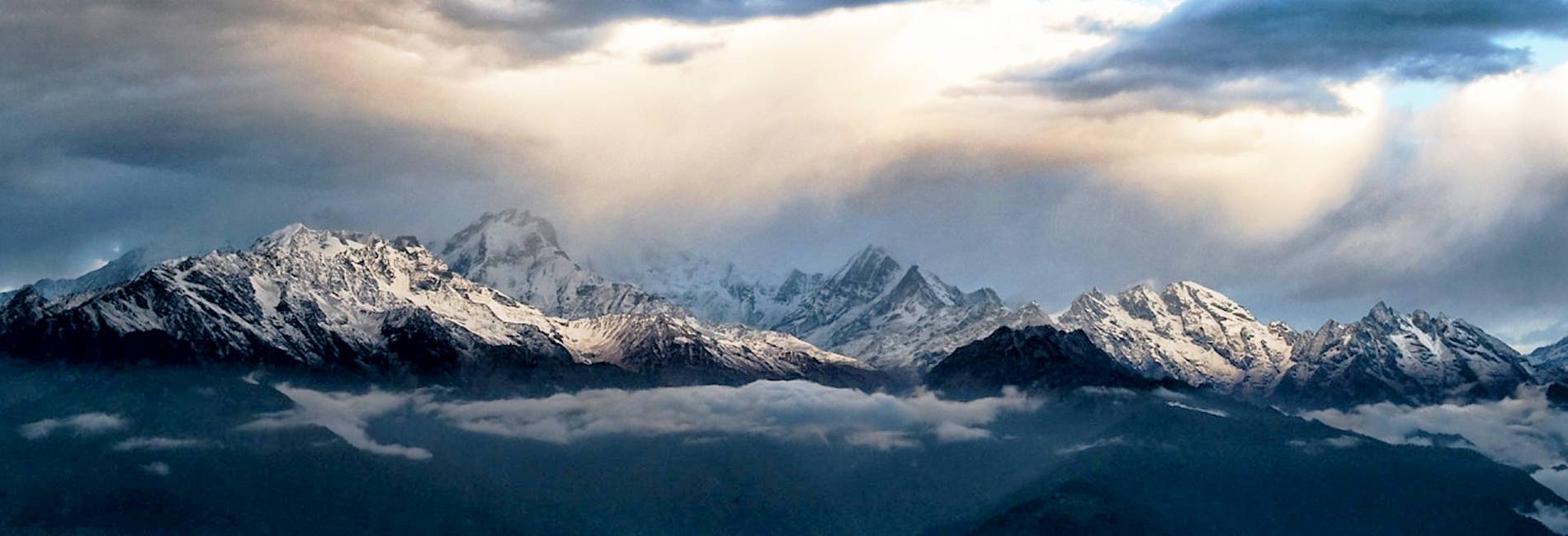
GANESH HIMAL BASE CAMP TREK
EXPLORE BEAUTIFUL VALLEYS AND VIEW SNOW CAPPED MOUNTAINS AMONG THE TIBETAN - TAMANG VILLAGES NEAR THE TIBETAN BORDER. Ganesh Himal is named after the Hindu elephant God-Ganesh. The Ganesh Himal i...
Can We Do the Langtang Valley Trek in 7 Days?
Yes, it is possible to complete the Langtang Valley Trek in 7 days, although a slightly longer itinerary is often recommended for better acclimatization and a more relaxed pace. Here’s a suggested 7-day itinerary:
Day 1: Kathmandu to Syabrubesi (1,550m) - 7-9 hours by bus or jeep.
Day 2: Syabrubesi to Lama Hotel (2,380m) - 6-7 hours of trekking.
Day 3: Lama Hotel to Langtang Village (3,430m) - 6-7 hours of trekking.
Day 4: Langtang Village to Kyanjin Gompa (3,870m) - 3-4 hours of trekking.
Day 5: Acclimatization day at Kyanjin Gompa. Optional hike to Tserko Ri (4,984m) for panoramic views.
Day 6: Kyanjin Gompa to Lama Hotel - 6-7 hours of trekking.
Day 7: Lama Hotel to Syabrubesi - 5-6 hours of trekking, then return to Kathmandu.
This itinerary is quite packed and leaves little room for rest days or side trips. If you have more time, consider extending the trek by a couple of days to allow for better acclimatization and to enjoy the scenery more leisurely.
Final Say
The Langtang Valley Trek is a fantastic adventure that offers stunning landscapes, rich cultural experiences, and a sense of accomplishment. Whether you're a seasoned trekker or a beginner, this trek has something to offer for everyone. October is an ideal time to undertake this journey due to its favorable weather conditions, making the experience even more enjoyable.
Proper preparation is key to a successful trek. Ensure you have the necessary permits, gear, and physical fitness. Hiring a guide and porter can enhance your experience by providing local insights and reducing the physical burden.
While the trek can be completed in 7 days, a slightly longer itinerary is often recommended for better acclimatization and a more relaxed pace. Budgeting around $700 to $1,000 should cover most expenses, including permits, transportation, accommodation, food, and guide/porter services.
In conclusion, the Langtang Valley Trek is a rewarding experience that offers breathtaking views, cultural richness, and a sense of adventure. With proper planning and preparation, you can make the most of this incredible journey. Happy trekking!
Langtang Region Packages
Any Questions? Let Us Know.
Recent Posts
17th June, 2025


















